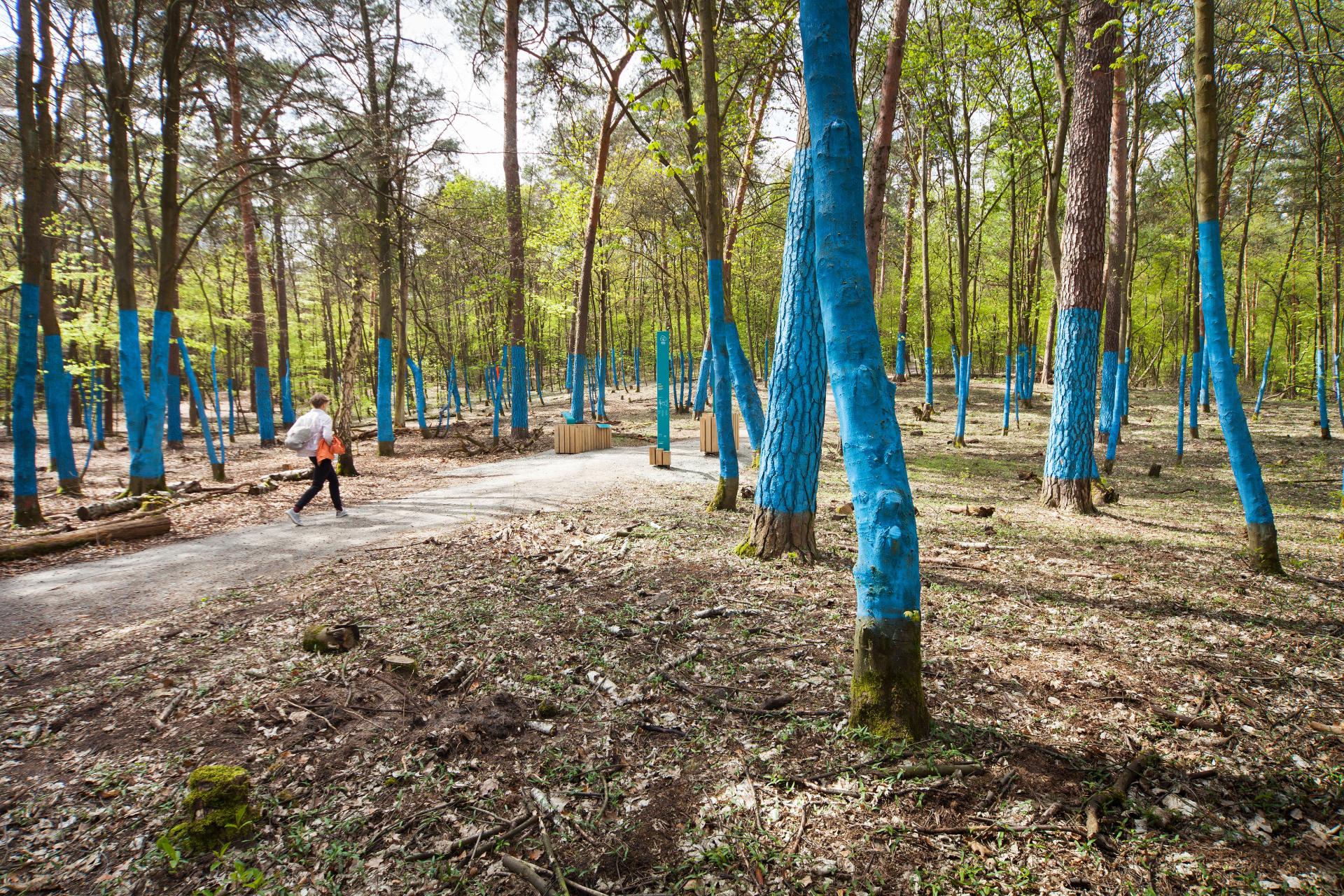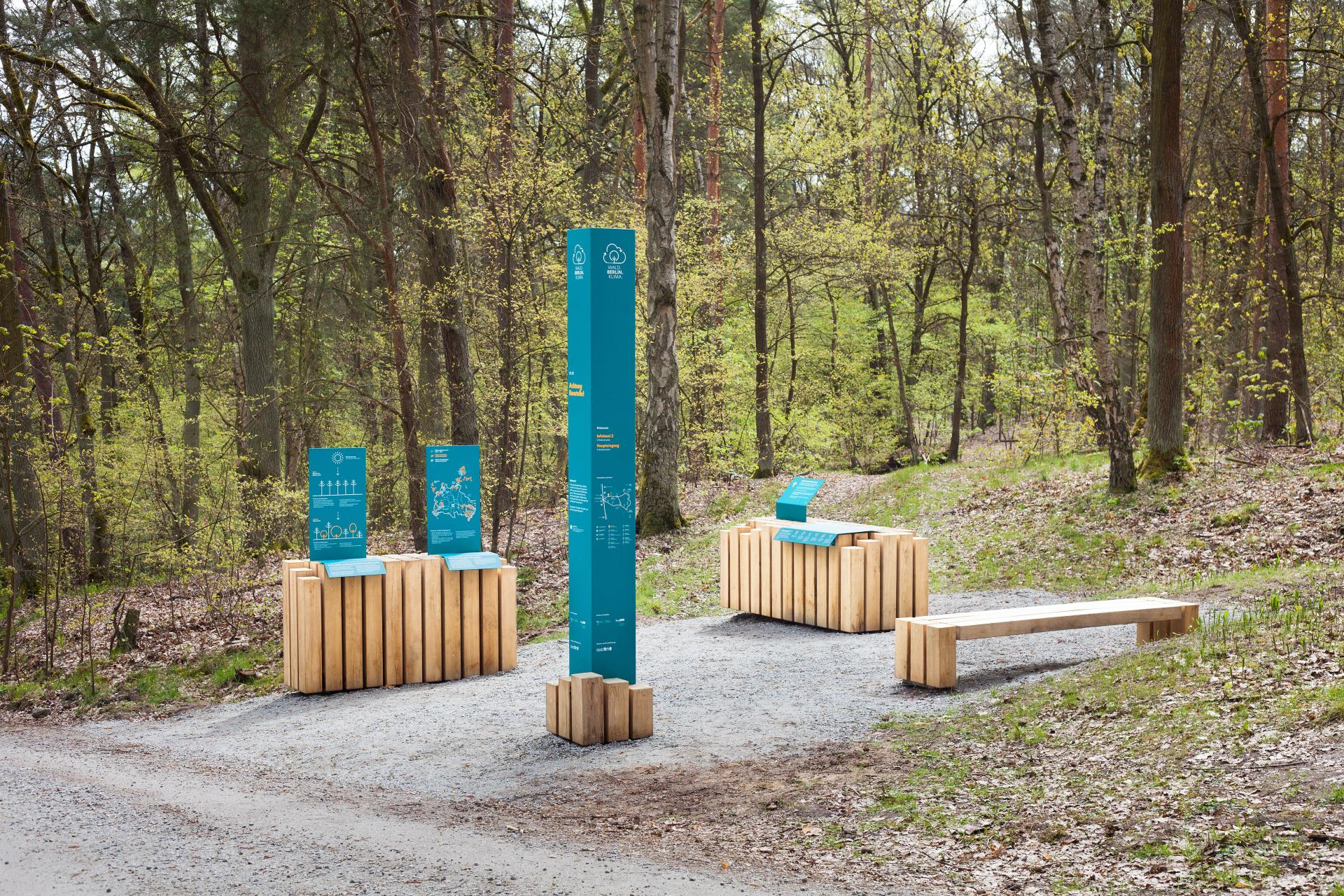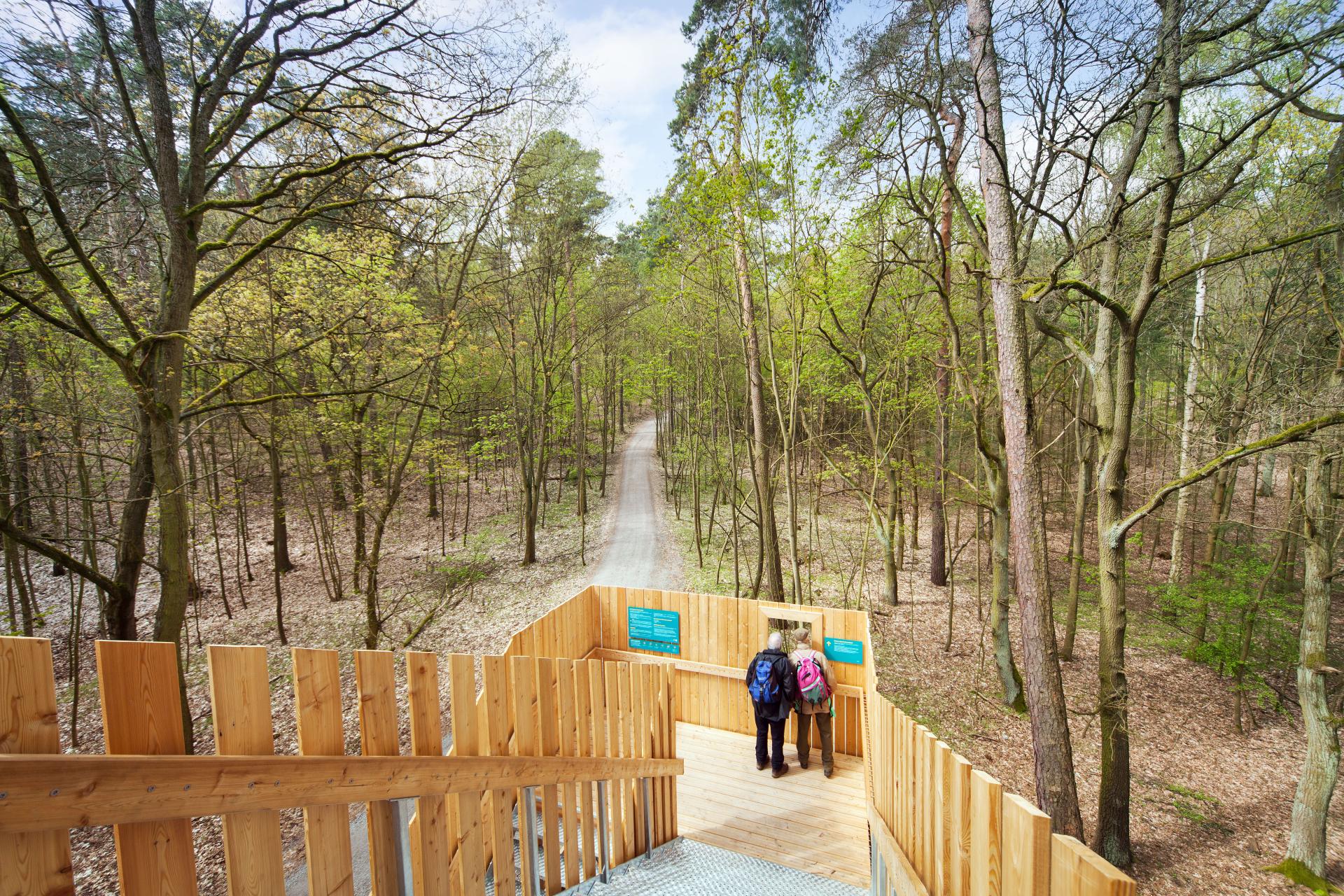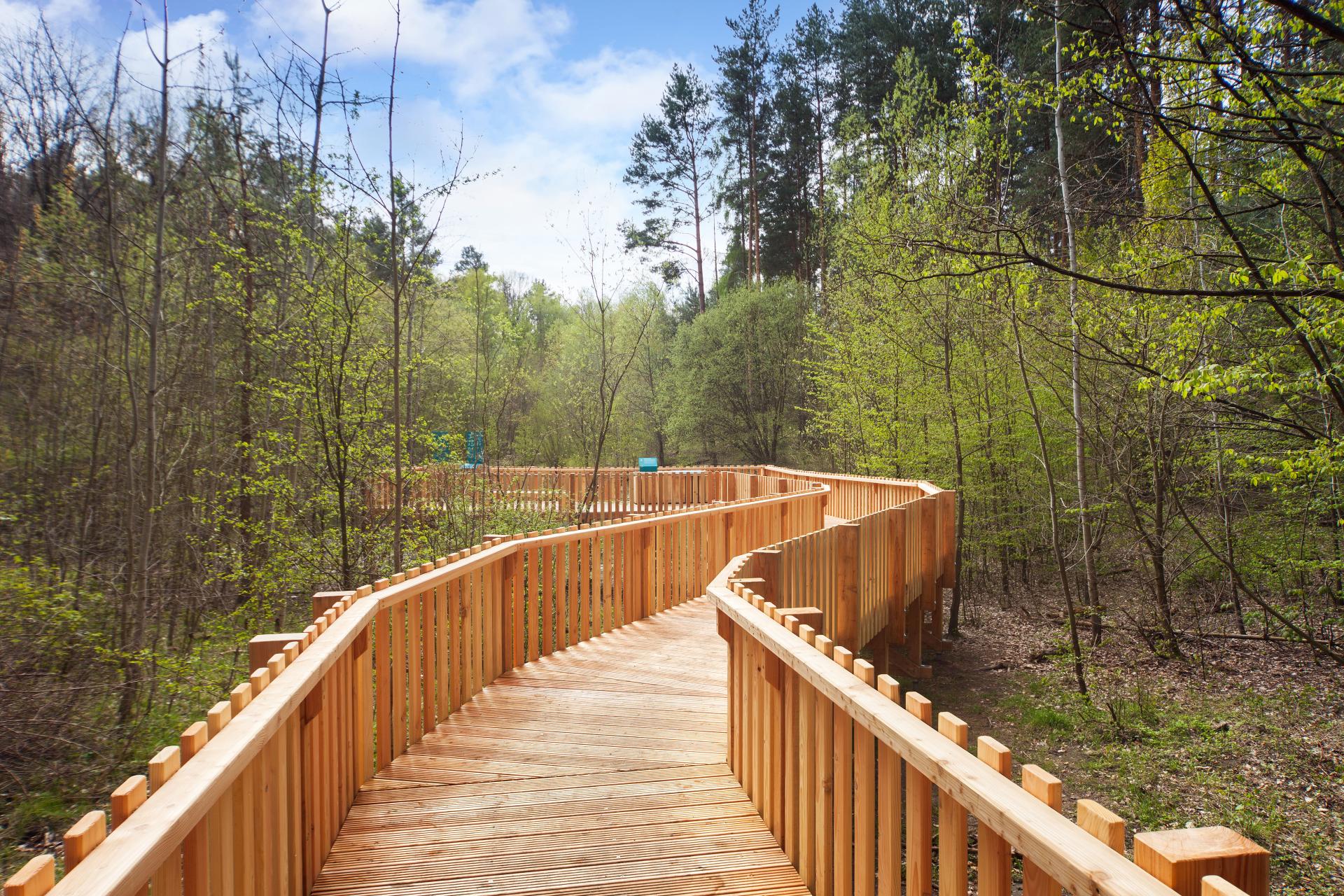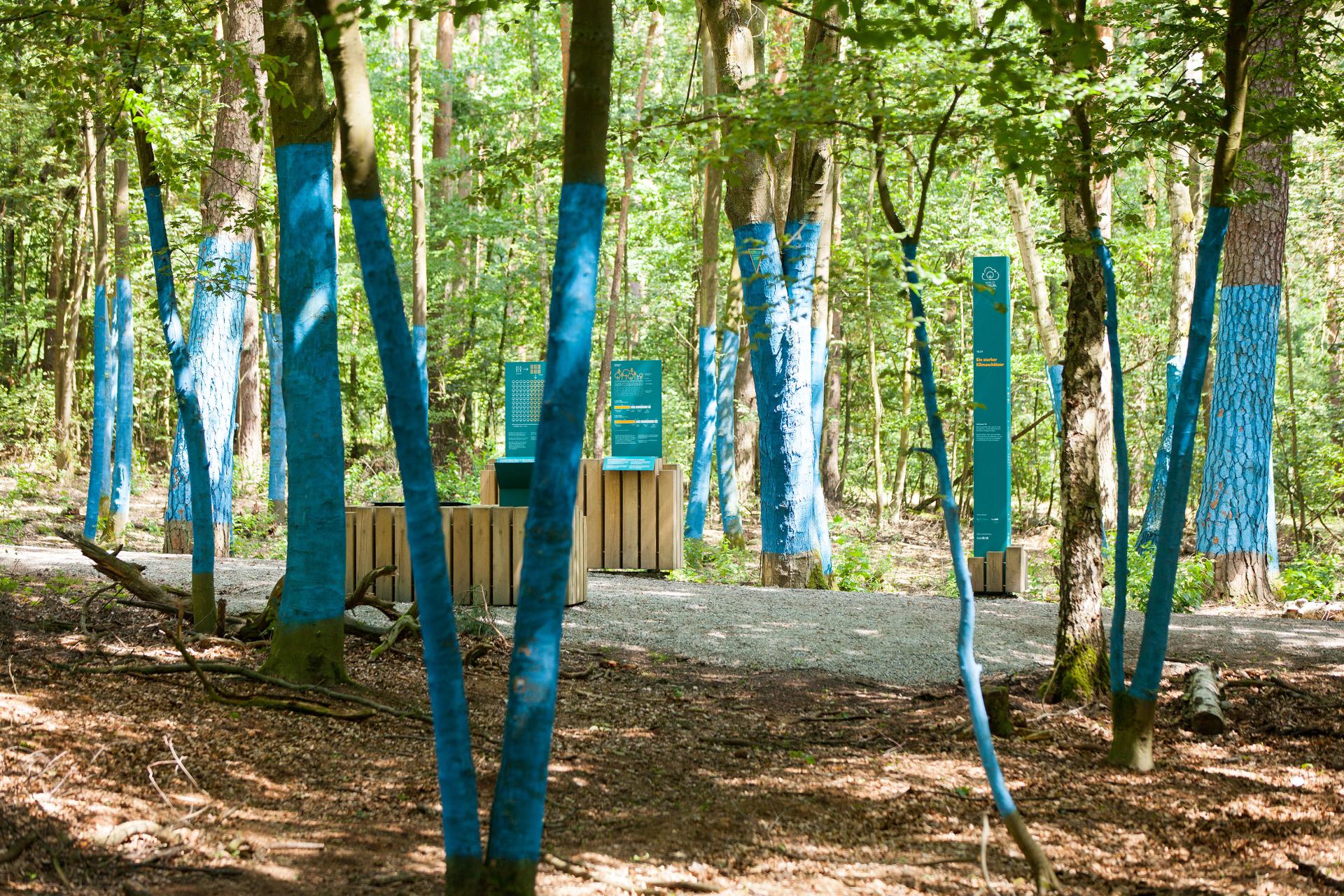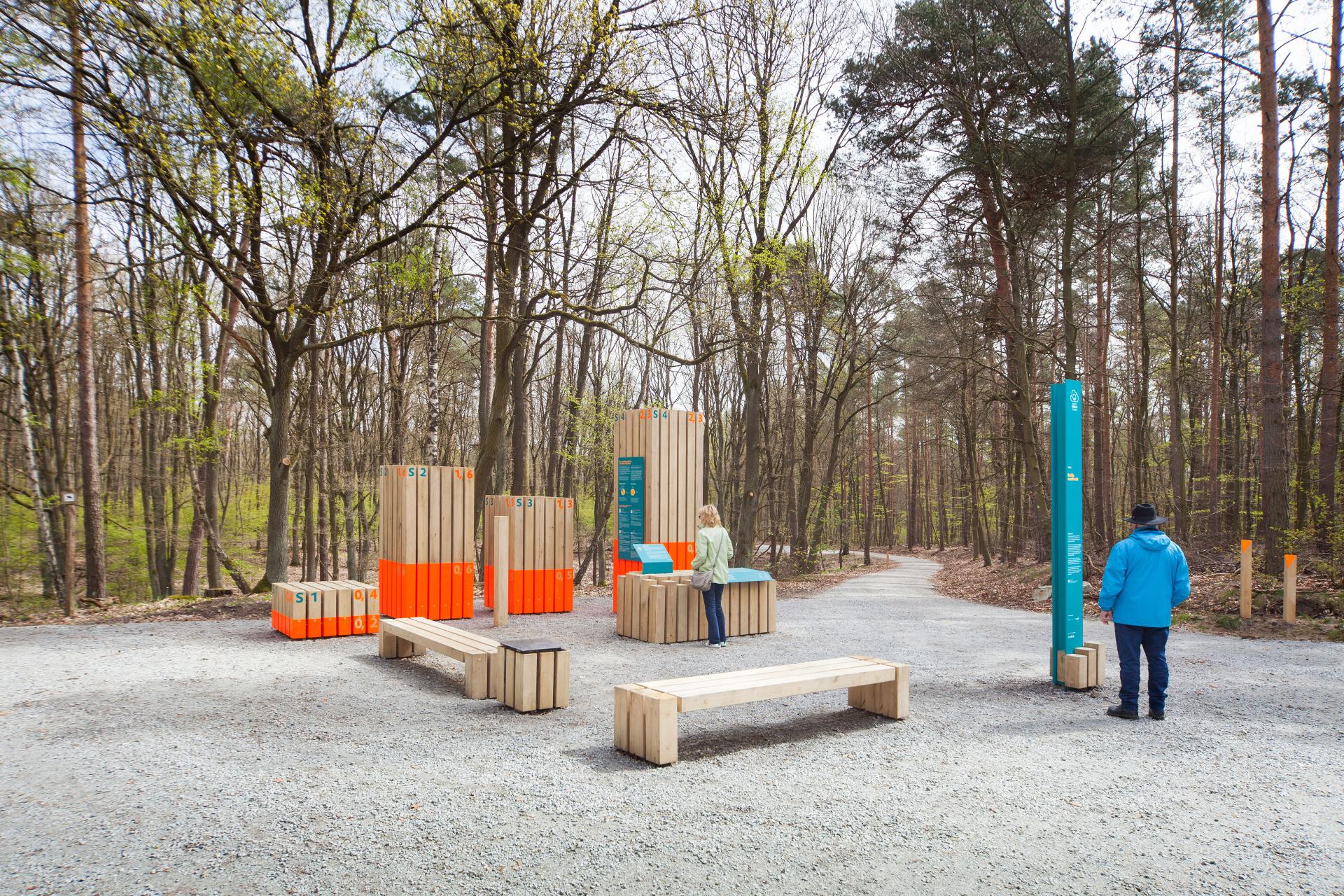Wald.Berlin.Klima.
Basic information
Project Title
Full project title
Category
Project Description
How can we educate the public about topics such as climate change and nature conservation? One of the best ways is to bring people closer to nature and show the changes in our environment directly.
Wald.Berlin.Klima. is an exhibition in the forest that allows people to dive into a natural conservation area without affecting it negatively. It explains the abstract aspects of climate change in a haptic and understandable way for all. The forest itself is the main exhibit. After the exhibition is
Project Region
EU Programme or fund
Description of the project
Summary
The Wald.Berlin.Klima. exhibition takes a stance of allowing people contact with a (protected) natural habitat and thus enabling them to develop a personal connection to the topic. The exhibition has a twofold role. Firstly, making visitors sensible to the natural environment on an emotional level and secondly, educate them about the abstract topic of climate change on a cognitive level. This is achieved through spatial measures as well as through information in form of graphics and texts.
The visitors are led along a 4 km long circular path through the forest on trails, raised walkways, and platforms to different points of interest. An orientation system makes visitors feel more comfortable and safe in the maze of trees, paths, and topography. It is composed of markers along the path and landmarks seen from afar.
Eleven stations in form of living rooms are placed on strategic points along the path. These square-shaped rooms are 5x5 m areas in the forest furnished with exhibition elements. They carry knowledge in form of text and clearly understandable graphics.
Large-scale installations complement the exhibition. They play an important role in the dramaturgy of the visit. Visible as landmarks they evoke curiosity and lure the visitor from one station to another. The installations communicate information playfully and emotionally, strengthening the experience.
Key objectives for sustainability
The most important contribution to sustainability is the educational aspect of the exhibition. The visitors become aware of the direct impacts of changing climate on the environment. The topics presented in the exhibition are biodiversity, formation of groundwater and moors, forests as CO2 binders, sustainable use of wood, and the importance of natural forestry. Through visiting and experiencing the exhibition, visitors are encouraged to think about their role in climate change and act upon it.
The built elements of the exhibition are constructed in a way that allows them to be easily removed and disassembled. On one hand, this leaves no traces in the forest after the end of the exhibition, on the other hand, it enables the reuse of the wooden beams for other projects. In this sense, the project follows the aspects of the circular economy.
Local materials were used in the construction. Paint used to mark trees is biodegradable and will fade and disappear once the project ends.
Key objectives for aesthetics and quality
Wald.Berlin.Klima. is intentionally designed to be more than merely an education trail. With an exhibition character, the fascination is elevated and addresses a broader public. It is attractive not only to visitors who actively seek to learn more about the environment, but invites everyone to make the a to the forest to see the unusual exhibition.
The design of the project brings a small part of urban orthogonal order into the complex environment of nature. It is a connecting link between a visitor and the forest. It enables the visitor observation and understanding of the natural complexity from a familiar platform – the living room. At the same time, the designed elements are only that – a platform. They allow the forest to step in the foreground and become the main element of the exhibition.
Simultaneously the orthogonal forms and bright signal colors (orange for orientation, blue for information) purposely contrast the natural environment. This ensures good visibility and an orientation system in the maze of forest trails.
Each of the orthogonal information islands or living rooms tells a story of a different aspect of the forest. Abstract phrases such as CO2 footprint are made visible and easily understandable through impressive installations along the path. At one installation visitors move through a surreal image in the forest where all the trees inside of a 0,5-hectare area have been marked blue. Through this, a visitor comprehends how big an area of forest needed for every Berliner to bind their annual CO2 emission is. A personal connection is achieved.
All elements from raised walkways and platforms to benches, exhibition elements, and signs are designed especially for this project. In this way, the uniform design language of Wald.Berlin.Klima. is recognizable from the largest to the smallest scale.
Key objectives for inclusion
Despite the remote location and a complex topic of climate change, the exhibition is made approachable to the broadest possible public in terms of accessibility and understandability.
The paths and platforms are wheelchair-accessible as much as the terrain allows without impacting the forest ground. The entrance area to the path is positioned in the vicinity of a bus stop to allow access by public transport.
The multi-sensory way the exhibition conveys knowledge is inclusive and easily understandable. The topics follow a didactic principle that makes information accessible gradually. Different individual interests and abilities are taken into account. Beginning with an introductory overview on the orientation markers, the transfer of information ranges from basic knowledge on desk-like signs to in-depth knowledge displayed in infographics and on vertical signs. Further expert knowledge is accessible through scanning a QR code. Spatial installations convey content in playful ways and draw attention to the main object of the exhibition - the forest.
Results in relation to category
The biggest contribution to nature conservation is in the fact, that protected natural areas were made visible and haptically experienced. The changes in the environment and its fragility were clearly shown without impacting them.
The existing forest landscape is used as an asset. The differences in terrain, morphology, and different habitats of the forest strip are integrated into the planning of the exhibition. Instead of creating artificial exhibits, the visitor is taken outside to experience them firsthand. Viewpoints and elements of interest in the forest are highlighted by the positioning of viewing platforms and installations. In this way, nature is integrated into the construction as the main actor.
At the same time, the design and construction of the project have minimum impact on existing habitats. The exhibition path follows existing trails. Where it enters an area of strict nature protection, it is raised on walkways and viewing platforms.
In addition to that, the tree population was preserved and endangered plant species were transplanted to different areas in order to avoid damage. The construction took place at a time where no birds were nesting in the area. Grounding of all elements is conducted via ground screws. This ensures that the impact on the soil is minimal and the foundations can be retracted easily without leaving any traces in the environment.
How Citizens benefit
In addition to close collaboration with the Forestry Department of Berlin, the planning process included the nature conservation authority and diverse experts from the field.
The department of Forestry has contributed with a rich knowledge of the location, its natural and social history. After the completion of the project, the forestry department continues to manage the exhibition. They conduct maintenance, organize events, and offer guided tours.
Experts on nature conservation, climate education, and the Nature Conservation Authority represented the public interest during all stages of the planning process. Through this cooperation a minimum impact on the natural environment was possible and at the same time, a high educational value was generated.
As school children were one of the bigger user groups of the exhibition, an ideas competition was held with a local school.
Innovative character
Likely the most important aspect of the project is the way the abstract topic of climate change is made understandable through relatable examples in experienceable in a landscape. Through an exhibition character of the project Wald.Berlin.Klima. uses an innovative approach that allows the attraction of large amounts of visitors to a protected natural area without impacting it. Wald.Berlin.Klima. is not only an education path but the first exhibition in the forest of this scale with regional and international importance.
The attraction for a broader public is created through a clear and attractive design that stands in a contrast to the natural environment. The installations, such as the blue half hectare of the forest, are attractive images, that lure people from cities to the remote location in the forest.
The impact on the environment is minimized through careful construction and the temporary character of all structures. The grounding of the elevated walkways, platforms, and exhibition elements is conducted through ground screws. This innovative system allows a minimal impact on the soil and can be removed without traces. The wooden exhibition elements are thus mobile and can be used elsewhere. The wooden beams can be disassembled without damage and used for other means. All materials used in the exhibition are environmentally friendly.
To find the best possible solutions, an innovative planning method with a series of workshops was applied. It allowed an effective and seamless collaboration between different disciplines (landscape architects, exhibition designers, climate, education specialists, foresters...), as well as the planning and nature conservation authorities.

